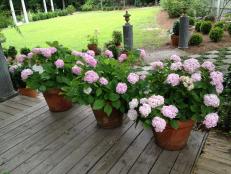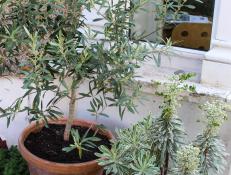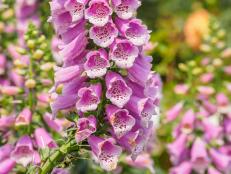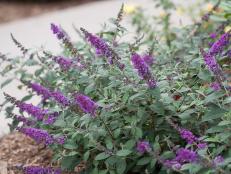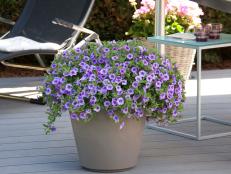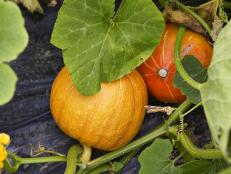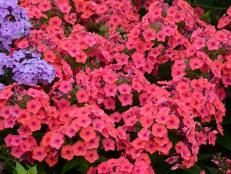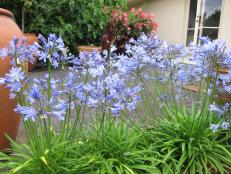Grow a Miniature Rose Indoors

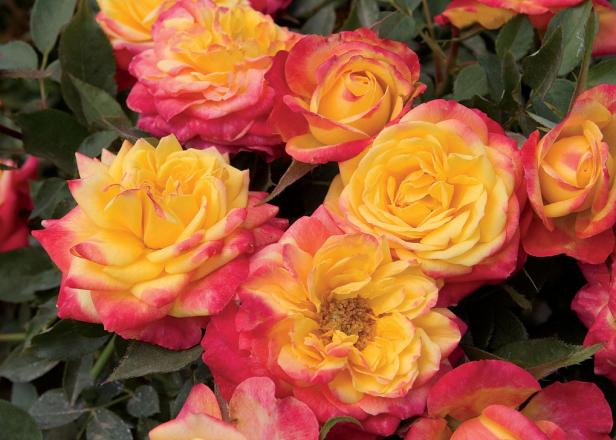
Courtesy of Star Roses and Plants / Greenheart Farms
Rose fans know bigger isn’t always better. Miniature roses, re-blooming shrubs that grow about 6 to 36 inches high, are as lovely as their full-size relatives and come in many colors and forms. Some minis—especially those with lavender or purple petals—even have a fragrance. The tiniest roses, known as micro-minis, have blooms less than an inch wide.
Because minis are so compact, they’re often sold in containers for your windowsill. Most will bloom indoors for a week or two, although they'll need to be planted outdoors to get the sun and other growing conditions they need for the long run. But give them a little care, and miniature roses can be great, although temporary, houseplants.
Here’s what you need to know:
Give your mini rose five or more hours of sun every day. Can’t provide that much natural light? If you’re really serious about growing miniature roses indoors, set up some grow lights. The American Rose Society recommends alternating between a cool white, a warm white fluorescent and an incandescent light at a ratio of 3 watts fluorescent to 1 watt incandescent. Roses need regular periods of light and darkness, though, so don’t leave the lights on all the time.
Raise the humidity around your mini rose. The average home is too dry for them, which can cause their leaves to drop. Use a humidifier or put your plants on top of some pebbles in a shallow tray of water. (Don’t let the plants touch the water, or the roots may rot.) You can also mist around your plants a few times every day.
Minis need good air circulation. If it’s too cold outside to open your windows every now and then, use a small fan to move the air around.
Most roses are heat-tolerant, but minis do best in daytime temperatures in the low to mid-70s, with a drop to the low to mid-60s at night. They’ll stop blooming if the temperatures drop below 50 degrees F for a while.
Don’t let your mini rose go completely dry. Water thoroughly when the soil feels dry about 1 inch deep. If you’re using a saucer underneath, pour off any excess water.
If you keep your mini rose indoors for a long time, you’ll probably need to fertilize. Apply a slow-release or water-soluble fertilizer when the plant is actively growing, following directions on the label.
Prune your minis, if needed, in late winter or very early spring. Remove dead or broken branches, and shape it as desired by cutting back healthy stems to just above a five-leaflet leaf. Deadhead—or pinch off—the spent blossoms to encourage more blooms.
Spider mites thrive in warm, dry conditions and can be a real problem when you’re growing miniature roses indoors. If you see these insects or their webs, knock them off with a spray of water in the kitchen sink. Spray underneath the leaves, too. If they persist, step up to a pesticide labeled for indoor use.
Minis can suffer from blackspot and other diseases that affect full-sized roses. To treat diseases, remove any infected leaves and use a fungicide labeled for inside use for your specific problem.
Once your mini rose starts dropping leaves or showing other signs of declining, you could compost it. But if you move it outside before it’s too far gone to recover, you can plant it in your yard or garden and enjoy the flowers for years to come. Most miniature roses are tough plants that are hardy in zones 5 to 9.
Start by slowly acclimating your mini to the outside world. Move it into a sheltered spot for a few hours each day, gradually increasing the time outside, for about 7 to 10 days.
When you’re ready to plant, dig a hole as deep as the container and 12 inches wider. Slide the rose of its pot and loosen the roots. To improve the soil, add some organic matter to the planting hole. Put the rose in and spread out its roots. Backfill and gently firm the soil. Most minis are grown on their own roots, so you don’t have to worry about burying the graft.
Water thoroughly and mulch to help keep moisture in the soil and protect the plant from freezing. Minis grow quickly to full size once they're established outdoors.






